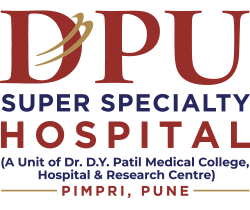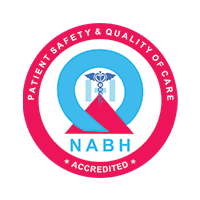Robotic Surgery vs. Open Surgery: A Comparative Analysis of Patient Outcomes

Robotic surgery has emerged as a revolutionary technique that offers precision and minimal invasiveness, challenging the traditional open surgery methods. Particularly, robotic surgery in Pune and other places in Maharashtra has been met with enthusiasm and skepticism.
In fact, robotic surgeries in India have a success rate ranging from an impressive 94% to 100%, reflecting not just the efficacy of the technology but also the expertise of the surgeons who wield it. But what does this mean for patient outcomes? Are shorter recovery times and reduced complications worth the investment in robotic technology?
This blog aims to shed light on the intricacies of robotic surgery compared to open surgery, focusing on patient outcomes to help individuals make informed decisions about their surgical options.
What Is Robotic Surgery?
Robotic surgery, also known as robot-assisted surgery, involves using robotic systems to perform complex procedures with more precision, flexibility, and control than is possible with conventional techniques. Surgeons operate through small incisions using a console that controls robotic arms equipped with surgical instruments. The key features include high-definition 3D vision, magnified views, and robotic arms that mimic the movements of the surgeon’s hands but with a greater range of motion.
This technology is utilised in various fields such as urology, gynaecology, and cardiothoracic surgery, offering patients benefits such as reduced pain, less blood loss, quicker healing times, and shorter hospital stays.
What Is Open Surgery?
Open surgery, the traditional form, requires large incisions through the skin and muscles, allowing surgeons direct access to the structures and organs being operated on. This method has been the cornerstone of surgery for decades and is known for its effectiveness and direct approach to treating complex conditions.
While open surgery can be highly effective for many conditions, it generally involves a longer recovery period, greater pain, and a higher risk of infection compared to minimally invasive procedures. Additionally, the visibility in open surgery is direct but limited to the exposure provided by the incision size.
Comparative Outcomes
Recovery Time
Patients undergoing robotic surgery typically experience quicker postoperative recovery. This is attributed to smaller incisions, which lead to less tissue damage. Studies have shown that robotic surgery patients often return to normal activities faster than those undergoing open surgery.
Precision and Control
Robotic surgery provides surgeons with superior precision and control, which is particularly important in complex anatomical areas. This can lead to better preservation of healthy tissues, reduced complications, and, in some cases, better overall outcomes in removing tumors or diseased tissue completely.
Infection Rates
Robotic surgery uses smaller incisions, which reduce the patient’s exposure to infectious agents and decrease the risk of post-surgical infections.
Cost and Accessibility
One downside to robotic surgery is its cost. The initial investment in robotic technology and the maintenance of these sophisticated machines make it more expensive than traditional surgery. However, the reduced cost of shorter hospital stays and less postoperative care can offset this.
Patient Experience
Many patients report higher satisfaction with robotic surgery due to reduced pain and scarring. However, the availability of such technology can be limited depending on geographic location and hospital resources.
Choosing the Right Surgery: A Collaborative Decision
Choosing between robotic and open surgery involves multiple considerations, making it a decision best reached through thorough discussions between the patient, their family, and the surgical team. This process is vital to ensure that the chosen method aligns well with the patient's medical needs, expectations, and the specific nuances of their condition.
Evaluating the Type of Disease
The nature and stage of the disease are decisive factors in selecting the appropriate surgical method. For conditions like prostate cancer, robotic surgery is often preferred due to its precision and the ability to preserve surrounding nerves, which can result in better functional outcomes. Conversely, for extensive or complex tumors that might have spread to multiple areas, open surgery could provide a better way to assess and remove all affected tissues comprehensively.
Considering Patient's Overall Health
The patient's overall health and physical condition also play a crucial role in this decision. Patients with significant comorbidities, such as heart disease or obesity, might require a tailored approach considering the risks associated with prolonged surgery time or potential complications from smaller surgical incisions. Robotic surgery, often being less invasive, might be safer for patients with high surgical risk profiles, reducing the likelihood of complications such as infections or lengthy recovery times.
Surgeon’s Expertise and Experience
A successful surgical procedure depends heavily on the surgeon's skill and familiarity with the chosen method. Some surgeons may have more extensive experience and better outcomes with open surgery, especially in complex cases that require tactile feedback, which robotic surgery cannot provide. Patients must discuss the surgeon’s qualifications, experience, and track record with both types of procedures to make an informed decision.
Resource Availability
The availability of medical technology and resources can also influence the choice between robotic and open surgery. While major cities like Pune offer state-of-the-art robotic surgery facilities, these may not be available in some regions. Accessibility to advanced robotic technology, the cost implications of using such technology, and insurance coverage are practical considerations that must be addressed.
Patient Preferences and Expectations
Understanding the patient's preferences, lifestyle, and recovery goals is crucial. Some patients may prioritise shorter recovery times due to work or family commitments, making robotic surgery a more attractive option. Others might focus more on the procedure's long-term efficacy or cost, potentially favoring open surgery if it aligns better with their financial situation or long-term health goals.
Consulting Healthcare Providers
Patients in Pune and beyond can consult with specialists experienced in robotic and open surgical techniques. Patients need to have detailed discussions with their healthcare providers to understand each surgical option's risks, benefits, and potential outcomes. This includes reviewing comparative data specific to their condition, discussing previous patient outcomes, and considering the support services available post-surgery.
Conclusion
The debate between robotic surgery and open surgery is not about declaring a clear winner but understanding which approach is best for each situation. As they offer numerous benefits that enhance patient outcomes, robotic surgery in Pune and other places in Maharashtra, where the technology is increasingly accessible. Nonetheless, open surgery continues to be a valuable option in many medical scenarios. Healthcare providers can recommend the most appropriate surgical method by considering the specific circumstances and patient needs, ensuring the best possible outcomes.








